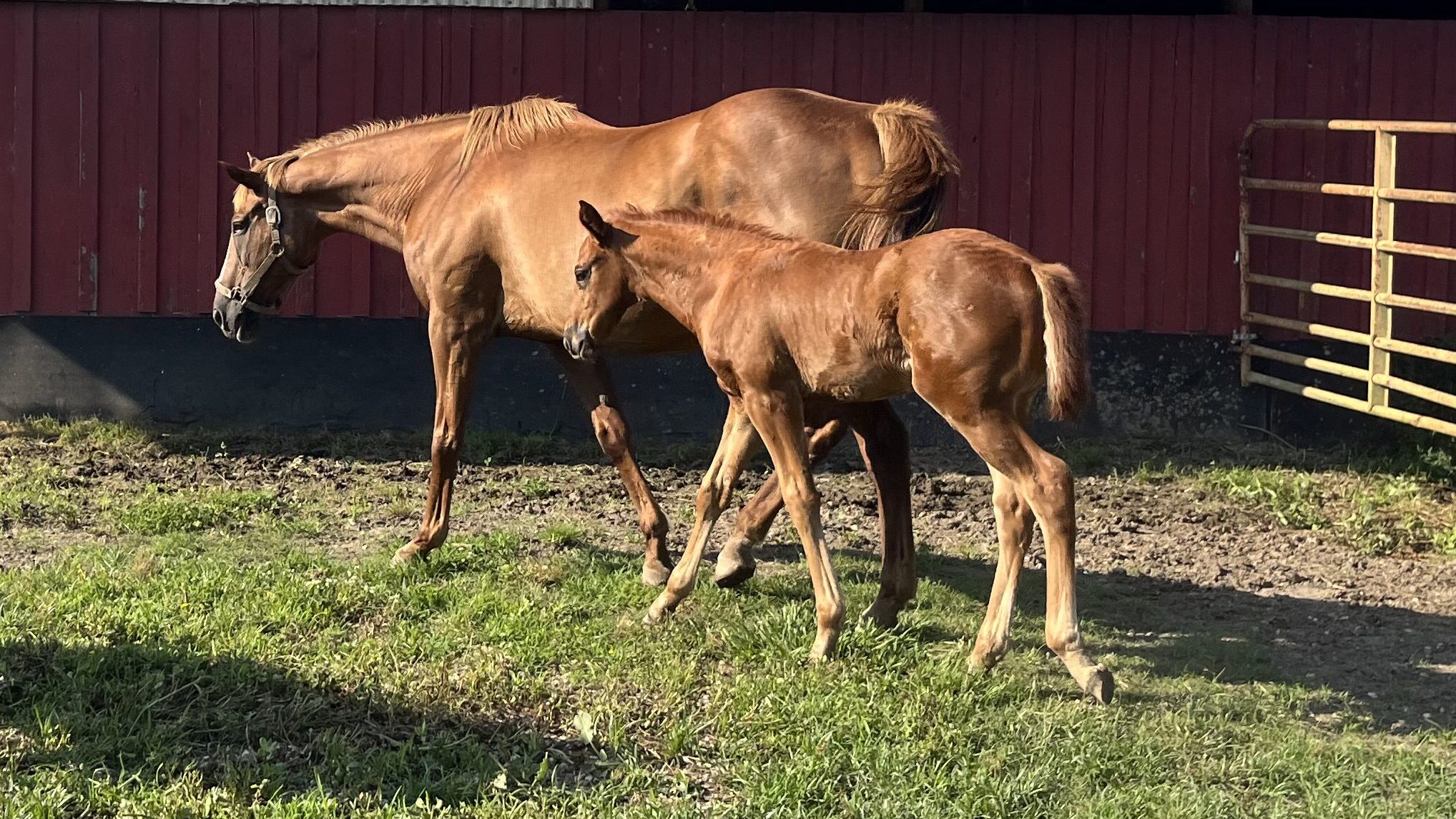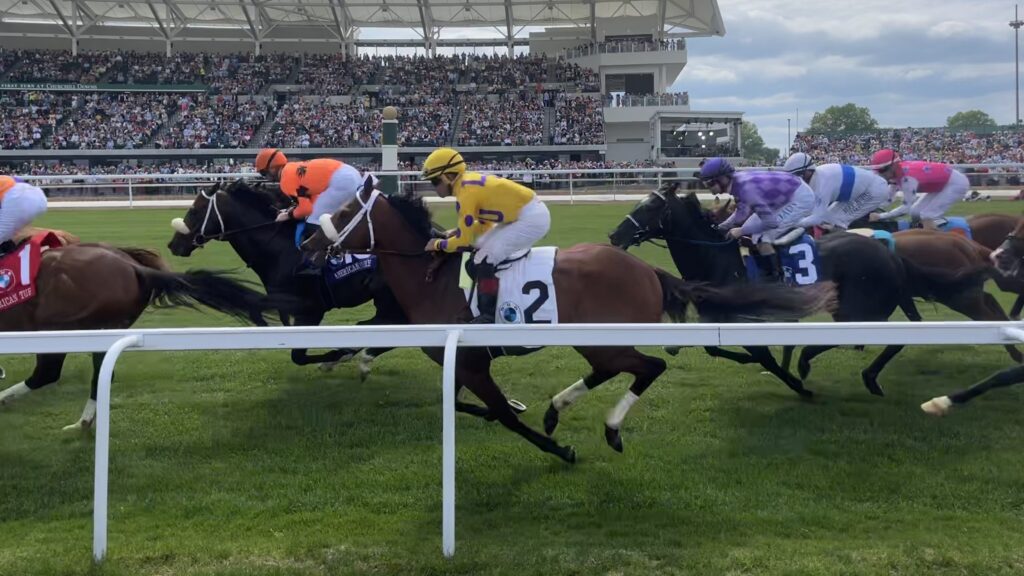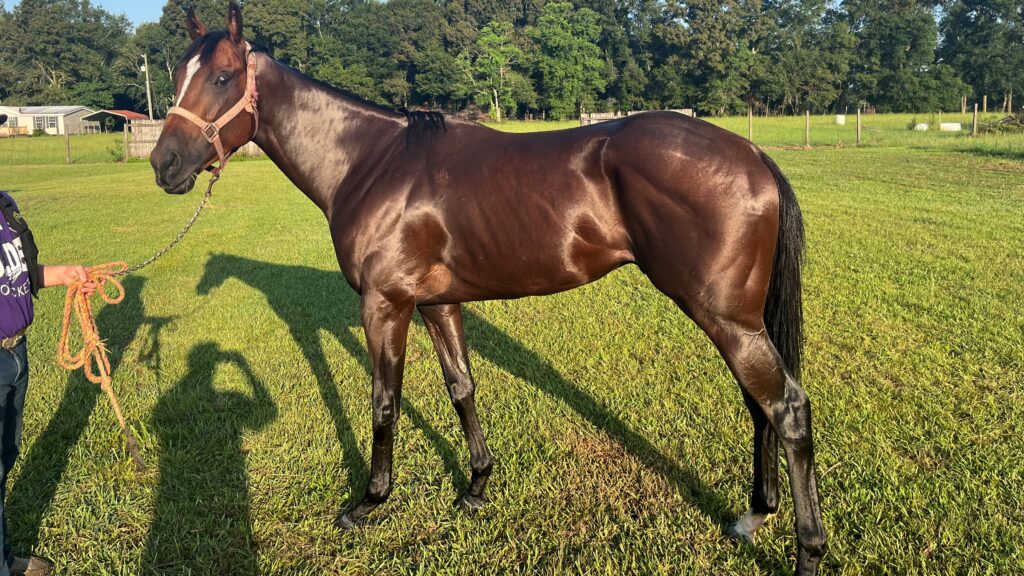Last updated: October 25, 2023
Welcome to the exciting world of horse racing. Known for its thrilling races and high-stakes competitions, this industry is more than just jockeys and thoroughbreds. It’s a vast ecosystem teeming with opportunities, especially for those willing to delve deeper into new ventures.
Enter pinhooking, a unique and potentially lucrative practice within the horse racing business. It’s the art of buying young horses, often foals or yearlings, and nurturing them with the goal of selling them for a profit as they mature, most often as two-year-olds in training. This blend of knowledge, patience, and savvy trading can unlock significant returns.
This article offers an accessible and comprehensive insight into the business of pinhooking. I’ll navigate through the process, explore its financial prospects, highlight key considerations, and even share some success stories. Whether you’re a horse racing enthusiast or an aspiring investor, this guide provides a starting point to understand and potentially engage in the hidden gem of horse racing: pinhooking.

The Art of Pinhooking: A Deeper Dive
At its core, pinhooking is an investment strategy grounded in the knowledge of horses and the horse racing industry. The term pinhooking has its roots in tobacco farming, where farmers would buy young plants, cultivate them, and sell them for a profit.
In horse racing, pinhooking follows a similar practice—investors purchase young horses, often yearlings, and sell them as two-year-olds in training, hopefully for a profit. The success of this strategy hinges on the careful selection of the horses, along with nurturing and training them to enhance their value.
By identifying promising yearlings, often based on their pedigree, conformation, and potential for growth, investors aim to capitalize on the difference between their initial purchase price and the eventual sale price when the horse is more mature and ready to race.
It’s not unlike flipping houses, where you buy a property, improve it, and sell it for a higher price. Pinhooking plays a significant role in the horse racing industry. It not only provides a path for investors to become involved in the industry, but it also creates a cycle that enhances the quality of racing stock.
By identifying promising horses early and investing in their development, pinhookers contribute to raising the standard of horses that eventually compete on the track. Whether you choose to focus on weanlings or yearlings, the pinhooking strategy involves buying young and selling them as two-year-olds in training.
This strategy takes into account the age at which horses are generally ready to begin their racing career and when their value tends to peak. With careful selection, diligent care, and proper training, pinhooking can transform a promising yearling into a profitable racing prospect.
Remember, however, that while pinhooking can be rewarding, it’s not without its risks. Much like any investment, it requires careful planning, a degree of financial risk, and the acceptance that not every horse will turn out to be a champion. But for those with a passion for horses and a keen business sense, it offers an engaging and potentially lucrative entry point into the world of horse racing.

The Business Aspect of Pinhooking
When delving into the business of pinhooking, the first question that may spring to mind is, “How can this be profitable?” The profitability of pinhooking hinges on a simple economic principle: buy low, sell high.
But unlike traditional commodities, racehorses have the potential to greatly increase in value with proper care and training. A yearling or weanling, bought at a relatively modest price, can be developed into a high-quality racing prospect and sold for a substantial profit.
The initial investment in pinhooking involves the purchase of young horses, typically foals, weanlings, or yearlings. The cost can vary widely based on the horse’s pedigree, conformation, and market trends. Additional costs include stabling, training, veterinary care, and transport to and from the sales.
It’s crucial to factor in these costs when considering your initial investment, as they can significantly impact the overall profitability of your venture. Now, let’s turn to the potential return on investment. The objective of pinhooking is to sell these horses as two-year-olds in training.
At this stage, they’re closer to their racing debut, and their value can significantly increase if they’ve developed well and shown promise on the training track. Successful pinhooking ventures have often seen returns multiple times their original investment, making it a potentially lucrative endeavor.
However, it’s vital to recognize the financial dynamics of pinhooking and understand that it carries inherent risks. Just like any investment, it’s not a guaranteed path to profitability. The horse market can fluctuate based on various factors, such as economic conditions and racing trends.
The development of the horse itself can also be unpredictable. Health issues, training setbacks, or simply not living up to its initial promise can impact the horse’s selling price. But therein lies the allure of pinhooking—it’s a business of calculated risks and potentially high rewards.
As a pinhooker, you’re part investor, part horse lover, and part gambler. With thorough research, careful planning, and a bit of luck, you could uncover the next racing star and achieve significant returns on your investment.

Process and Considerations for Pinhooking
Diving into the process of pinhooking, we start with the purchase of foals, weanlings, or yearlings. The selection of these young horses is a critical aspect of pinhooking and requires careful consideration of several factors.
The horse’s pedigree or bloodline is often a primary consideration. It can give a good indication of the horse’s potential racing ability, as traits like speed and endurance can be inherited. Next, the horse’s conformation – the physical appearance and structure of the horse – is analyzed.
A well-conformed horse with a balanced body, strong bones, and a good gait is more likely to perform well on the racetrack and is more appealing to buyers. The health of the horse is also crucial. Any signs of underlying health issues could potentially derail the horse’s racing career and thus lower its value.
The initial selection process is, therefore, an art requiring a keen eye, deep knowledge, and sometimes, a bit of intuition. Once the young horse is purchased, the next stage is the training phase. The primary goal during this period is to prepare the young horses for racing and enhance their value.
This includes proper nutrition to support their growth, regular exercise to build their strength and stamina, and beginning their education under saddle. Depending on their age when purchased, the duration of the training period will vary.
A yearling would typically be trained for about a year before being sold as a two-year-old in training. A well-planned and executed training program can significantly increase the horse’s value, transforming an uncut gem into a shining diamond.
The final part of the pinhooking process is selling the two-year-olds in training. This often happens through public auctions, where the horse is sold to the highest bidder. Auctions are a common platform for buying and selling racehorses and can provide an exciting climax to the pinhooking process.
Alternatively, private sales may also be used, where a horse is sold directly to a buyer without going through an auction. The choice between auction and private sale depends on various factors, including the perceived value of the horse, market conditions, and the seller’s preference.
In the journey of a pinhooker, every phase is filled with anticipation and hope – from selecting the young horse with potential to seeing them develop and, finally, the moment of sale. It’s a cycle of investment, nurture, and reward.
Each phase holds its own challenges and considerations but also the potential for great rewards. With the right blend of knowledge, expertise, and a dash of luck, pinhooking can indeed be a profitable and thrilling venture in the horse racing industry.

Success Stories and Case Studies
In the world of pinhooking, there are many tales of individuals turning substantial profits by investing wisely in foals, weanlings, and yearlings. One exceptional success story in the world of pinhooking belongs to Randy Hartley and Dean De Renzo.
The pair purchased a yearling named The Green Monkey for $425,000, then nurtured and trained him into a promising two-year-old prospect. At that point, they sold The Green Monkey at a 2006 Fasig-Tipton sale for a record-breaking sum of $16 million.
Several impressive pinhooking triumphs graced the Goffs UK Breeze-Up Sale in Doncaster, but none rivaled the success Bushypark Stables attained with a son of Tasleet. This standout colt captured the market’s attention, fetching the highest bid of $299,792 from Blandford Bloodstock.
Matt Whyte from Bushypark Stables originally purchased the colt, a progeny of Silent Music, for just $19,222 at the Premier Yearling Sale. However, following a remarkable pre-sale breeze, the colt’s price soared, ultimately selling for more than 16 times his initial cost.
Successful pinhookers often emphasize the blend of science and instinct in their strategy. As one successful pinhooker shared, “You have to combine a deep understanding of pedigrees, conformation, and racing potential with a gut feeling about the horse’s spirit.”
Many also stress the importance of patience and resilience. While there may be significant victories, there will also be inevitable disappointments, but maintaining a long-term perspective is key to success in pinhooking.
Upon analyzing these successful cases, several common factors emerge. First, successful pinhookers are often experts in evaluating the potential of young horses. This involves thorough research, keen observation, and, sometimes, intuition.
Second, they invest not just in the purchase of the horse but also in its development and training. The transformative journey from yearling to a two-year-old in training is where much of the value is created. Finally, successful pinhookers are adept at navigating the sales process, knowing when and where to sell to maximize returns.
These success stories not only illustrate the potential profitability of pinhooking but also reveal the skills, knowledge, and mindset required to succeed in this venture. Whether you’re aiming to become the next Randy Hartley and Dean De Renzo or simply exploring pinhooking as a hobby, these insights can provide valuable guidance on your journey.

Challenges and Risks in Pinhooking
As thrilling and profitable as pinhooking can be, it’s important to be cognizant of the risks inherent in this venture. The first and perhaps most apparent risk is the unpredictability of young horses’ development.
Young horses, whether they’re foals, weanlings, or yearlings, are just beginning their growth journey. Injuries, illnesses, or developmental issues can occur, affecting their value and potentially leading to financial losses.
Furthermore, the horse market is susceptible to fluctuations. Market trends, economic conditions, and even the performance of horses with similar pedigrees can affect the prices at sales. You could find that the market is less favorable when it comes time to sell your two-year-olds in training.
Mitigating these risks requires a combination of diligence, knowledge, and strategy. Due diligence during the initial purchase can help you avoid horses with potential health issues. This could involve veterinary check-ups and a close inspection of the horse’s conformation and movement.
From a financial perspective, diversification can be an effective mitigation strategy. Instead of buying one expensive yearling, some pinhookers choose to purchase several less expensive horses. This spreads the risk and increases the chance of getting a profitable return from at least one of them.
Planning and having an exit strategy is paramount in navigating the risks of pinhooking. This involves setting a budget for your initial investment and ongoing expenses, defining your goals, and deciding on the criteria for selling the horse.
For instance, you may decide to sell a horse if it reaches a certain price, regardless of whether you believe it could fetch a higher price later. Finally, remember that while pinhooking offers the potential for substantial profits, it should not be approached purely as a money-making venture.
A passion for horses and a love for the sport of horse racing are important aspects of any successful pinhooking story. With realistic expectations, thorough preparation, and a sound strategy, you can navigate the risks of pinhooking while enjoying the journey this unique venture offers.

Essential Skills and Knowledge for Successful Pinhooking
Success in pinhooking is largely determined by the skills and knowledge one brings to the table. The first crucial skill involves the selection of the yearling. A deep understanding of pedigrees, or the horse’s lineage, is essential.
Certain traits like speed, endurance, and even temperament can be passed down through generations, and a good pedigree can enhance the horse’s racing potential and its appeal to buyers. Moreover, a keen eye for conformation—the physical structure and proportion of the horse—is vital.
A well-conformed horse will not only be more likely to succeed on the racetrack but also be more desirable at the sales. Developing this ability to evaluate a yearling based on its pedigree and conformation requires knowledge, experience, and a genuine passion for horses.
Next, an understanding of training principles and techniques for young horses is crucial. The goal of the training process in pinhooking is to prepare the young horse for a racing career while enhancing its value.
This involves proper nutrition, regular exercise to build strength and stamina, and beginning their education under saddle. Knowledge in this area helps ensure that your young horses are well-prepared to impress at the sales.
Finally, insight into the horse racing market and trends affecting the sale of two-year-olds is key. This involves understanding market dynamics and factors that could influence buyers. This could include everything from economic conditions to recent race results involving horses with similar pedigrees.
It also means staying informed about changes in the racing industry, from new regulations to shifts in popular racing styles. In sum, successful pinhooking involves a blend of technical knowledge, practical skills, and an understanding of market dynamics.
It’s about understanding the science behind horse racing while keeping an eye on market trends. Most importantly, it’s about a passion for horses and a willingness to invest time and resources into their development. With these skills and knowledge in your arsenal, you’ll be well-equipped to venture into the exciting world of pinhooking.
Conclusion
Pinhooking, the practice of buying young racehorse prospects with the intent to sell them as more mature racing hopefuls, offers an intriguing venture within the horse racing industry. As we’ve explored, this business is more than just a simple buy-and-sell transaction.
It requires a deep understanding of horse selection, training principles, and market dynamics, coupled with a willingness to embrace the risks inherent in the trade. However, for those who navigate these challenges wisely, pinhooking offers the potential for substantial rewards.
Successful pinhooking is not just about the thrill of uncovering a diamond in the rough; it’s also about the journey of transforming a promising yearling into a sought-after racing prospect. It’s about the anticipation that builds from the moment of purchase through the growth and training phase, all the way to the auction ring.
For those with a passion for horses and an interest in the business side of horse racing, pinhooking provides an engaging and potentially profitable avenue to explore. So, if this article has sparked your interest, don’t stop here.
Continue learning and investigating. Delve deeper into the intricacies of horse selection, learn about the nuances of training young horses, and familiarize yourself with the ebbs and flows of the horse market. Reach out to successful pinhookers, attend horse sales, and immerse yourself in the world of horse racing.
Remember, every great pinhooker started with a first step—a step driven by curiosity, ambition, and a love for the majestic creature that is the racehorse. Who knows? Your pinhooking journey might just lead you to uncover the next champion of the racetrack.
Resources and Further Reading
If you’re intrigued by the art and business of pinhooking and eager to expand your understanding, here are some resources and next steps to consider:
- Books: ‘The Equine Business Bible by me, Miles Henry, provides an excellent overview of the industry, including pinhooking.
- Websites: The Blood-Horse (www.bloodhorse.com) and the Paulick Report (www.paulickreport.com) are two well-regarded online publications that regularly feature articles and insights about pinhooking and other aspects of the racing industry.
- Courses: The University of Louisville offers a program in the Equine Industry that covers a broad range of topics, including horse breeding and trading. Online courses like those offered by Coursera also provide a platform for learning about the equine industry.
- Networking: Attend horse sales, racetrack events, and industry conferences. These events are excellent opportunities to meet experienced pinhookers, breeders, trainers, and other industry professionals.
- Shadowing: If possible, consider spending some time shadowing a successful pinhooker or trainer. This kind of firsthand experience can provide invaluable insights into the daily operations and challenges of the business.
- Consultations: Prior to making any investment, it may be wise to consult with a financial advisor familiar with the horse racing industry. They can provide tailored advice based on your financial situation and investment goals.
Remember, diving into pinhooking is a journey of continuous learning and exploration. Every book you read, every event you attend, and every conversation you have with industry professionals will add to your growing knowledge base. As you embark on your pinhooking adventure, embrace every learning opportunity that comes your way, and you’ll find yourself well-prepared to navigate the thrilling world of horse racing.

About the Author: Miles Henry
Lifelong Horseman | Racehorse Owner | Published Author
Miles Henry brings over 25 years of hands-on experience training and owning Thoroughbred racehorses. Raised with Quarter Horses and Appaloosas, he’s spent a lifetime learning from horses—on the track, in the barn, and in the field. Today, he runs a small but successful racing stable in Louisiana and shares real-world insights on HorseRacingSense.com, helping horse owners, fans, and bettors navigate the sport with confidence.
📚 Books: View Miles’s books on Amazon »
🎧 Podcast Guest: Animal Tales Ep. 32 |
YouTube Interview
📩 Newsletter: Sign up for racing tips and horse care advice »
🔗 Follow Miles:
Twitter |
Facebook |
YouTube

